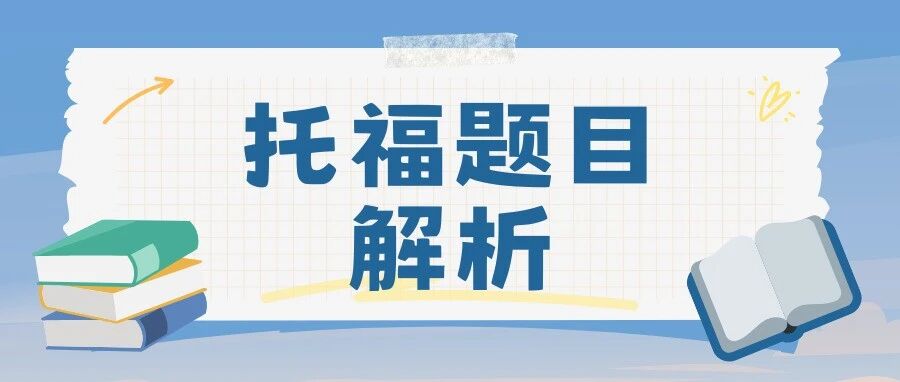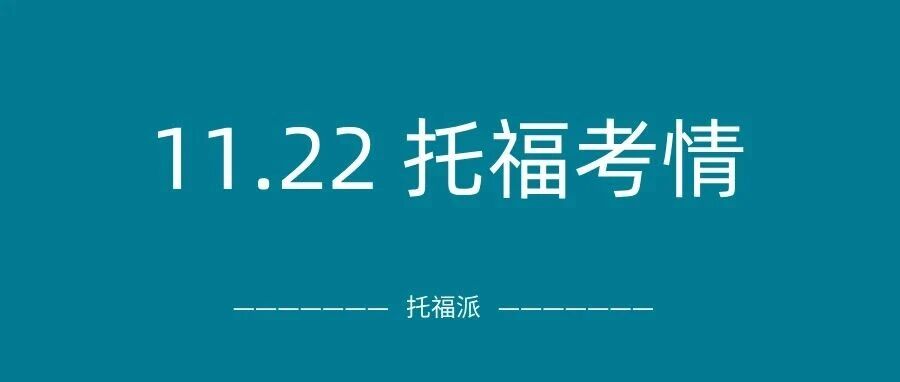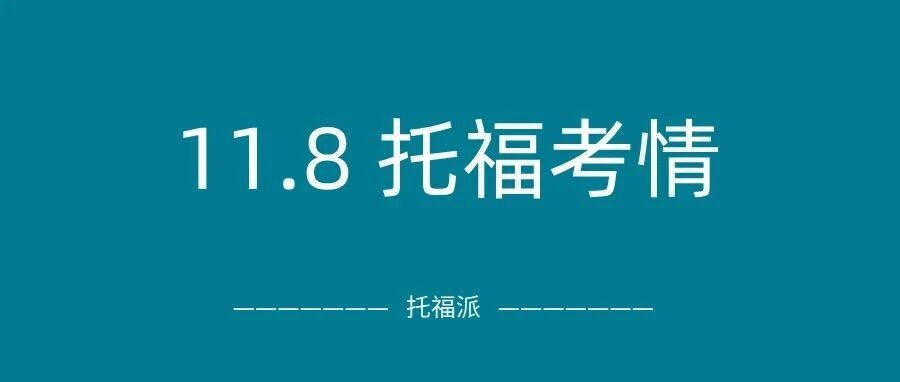1. 对话开头 2. 寒暄之后 3. 延伸话题后
一. 对话开头
在对话开头出现的主旨题一般比较直接且简单,同学们比较容易听到信号词选对答案。但是要注意:因为它在比较开头的位置,有一部分同学在开始的时候注意力相对不集中,如果不了解开头的出题信号,可能就会漏听。 所以大家要关注开头的主旨信号信号,比如学生会说的I was wondering…;I want to ask; 或者老师会说的 what can I do for you?等例题:TPO2-C1
[audio mp3="https://www.testdaily.cn/wp-content/uploads/2021/09/getvoice-8.mp3"][/audio] 1.Why does the man go to see his professor? A. To borrow some charts and graphs from her B. To ask her to explain some statistical procedures C. To talk about report he is writing D. To discuss a grade he got on a paper原文
 这篇对话就是一个非常直接的开头,没有废话,学生上来说I was wondering…I have questions…听到这个信号,表明学生的目的就要出现了。然后再叠加老师说的信号What did you want to talk about? 所以这个开头一共有三个信号的提示。
I have some quick questions这句就是学生目的所在的地方,意思是:不知道如何写关于气候变化的研究报告。所以直接对应的是C选项,谈论正在写的报告。
所以这个题的答案是【C】
这篇对话就是一个非常直接的开头,没有废话,学生上来说I was wondering…I have questions…听到这个信号,表明学生的目的就要出现了。然后再叠加老师说的信号What did you want to talk about? 所以这个开头一共有三个信号的提示。
I have some quick questions这句就是学生目的所在的地方,意思是:不知道如何写关于气候变化的研究报告。所以直接对应的是C选项,谈论正在写的报告。
所以这个题的答案是【C】
二. 寒暄之后
有时学生与老师见面,并不会开门见山的提出问题,而是会先寒暄说点其它的内容,再说自己来的目的。我们来看一个例题。例题:TPO18-C1
[audio mp3="https://www.testdaily.cn/wp-content/uploads/2021/09/getvoice-11.mp3"][/audio] 1.Why does the student go to the university office? A. To apply for a work-study job B. To get information about hosting an exchange student C. To find out if there are any jobs available on campus D. To find out eh hours of the computer lab原文
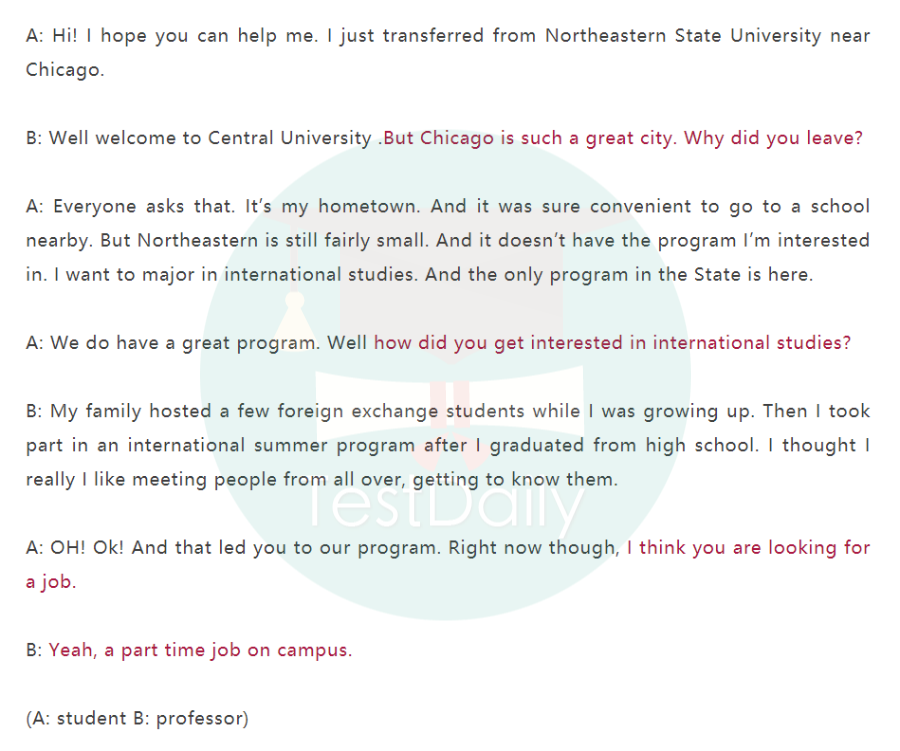 在这篇对话里,学生和老师开篇先讲了为什么转学,以及如何对international studies产生兴趣,也就是这篇对话的寒暄部分。寒暄后老师继续说:I think you are looking for a job询问学生来的原因是否是找工作,这才是学生来找老师目的出现的地方,并且后面学生肯定了老师的想法“Yeah, a part time job”。
所以【C】选项中的if there are any jobs available on campus对应音频的内容,而B选项的hosting an exchange student虽然在寒暄部分出现,但只是老师了解学生情况问的问题,并不是学生来找老师的原因。
所以这个题答案是【C】
在这篇对话里,学生和老师开篇先讲了为什么转学,以及如何对international studies产生兴趣,也就是这篇对话的寒暄部分。寒暄后老师继续说:I think you are looking for a job询问学生来的原因是否是找工作,这才是学生来找老师目的出现的地方,并且后面学生肯定了老师的想法“Yeah, a part time job”。
所以【C】选项中的if there are any jobs available on campus对应音频的内容,而B选项的hosting an exchange student虽然在寒暄部分出现,但只是老师了解学生情况问的问题,并不是学生来找老师的原因。
所以这个题答案是【C】
三.对话中间
有时,一篇对话,我们可能已经听到1分半或者2分钟左右的时候,中间偏后的位置才会出现对话的目的。比如:学生来找老师先聊一个见闻,聊了大概2分钟,学生说:其实聊见闻的原因是想根据它来写一篇论文。这时,对话发生的真正目的才出现:咨询写论文。我们来看一个例题:例题:TPO26 C2
[audio mp3="https://www.testdaily.cn/wp-content/uploads/2021/09/getvoice-10.mp3"][/audio] 1. Why does the student go to see the professor? A. To obtain notes from a class she missed B. To discuss a conference she attended C. To ask about a possible topic for a research paper D. To clarify information about volunteering in the community原文

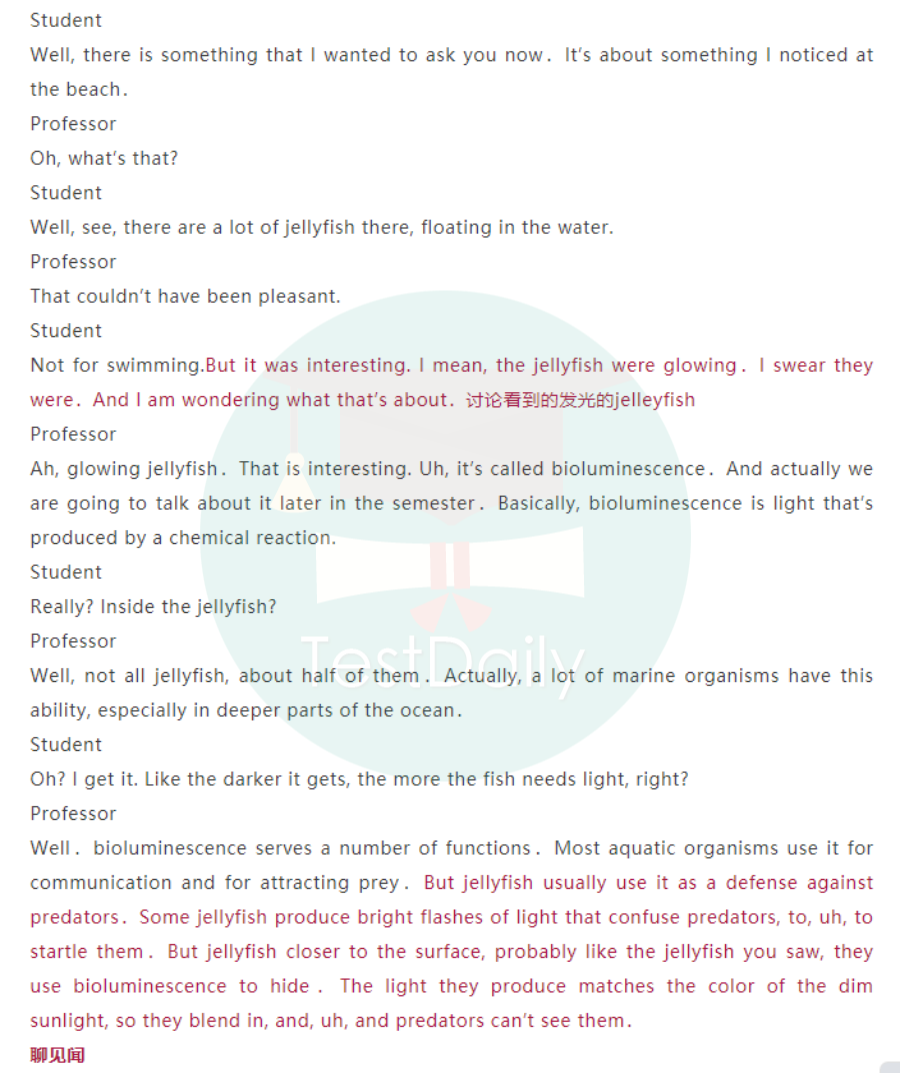

本文作者
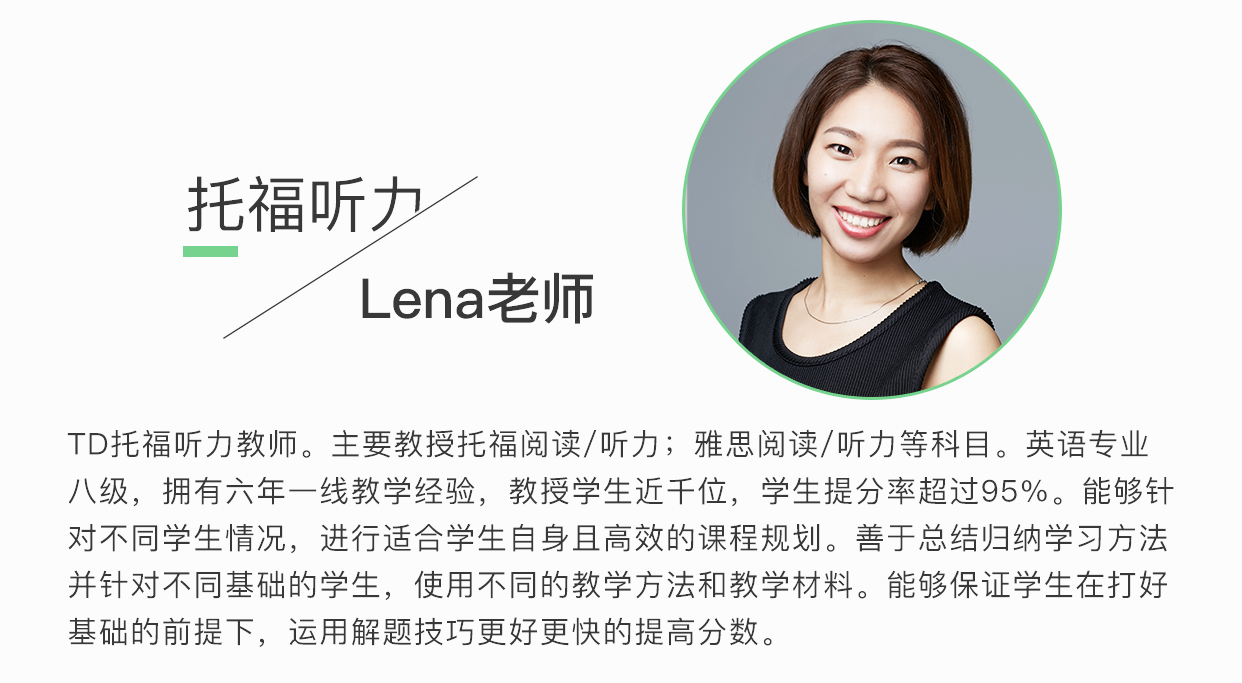
TD福利 & 领取方式
通过上面的讲解,我们了解了对话主旨题答案常见的三个位置以及信号词的抓取。大家学习完之后,可以领取《托福听力题型系列—conversation 目的主旨练习》这份资料。里面包含了更多关于主旨题的例题及思路讲解,帮助大家巩固所学。 [caption id="attachment_48147" align="aligncenter" width="242"]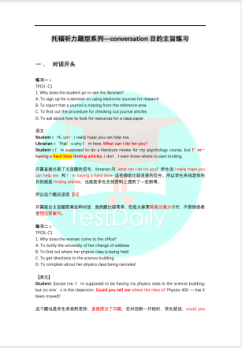 对话目的主旨题练习资料部分展示[/caption]
有需要的同学可以扫描下方二维码,添加小马甲微信发送暗号【听力主旨题】获取哦~
对话目的主旨题练习资料部分展示[/caption]
有需要的同学可以扫描下方二维码,添加小马甲微信发送暗号【听力主旨题】获取哦~




 推荐阅读
推荐阅读
